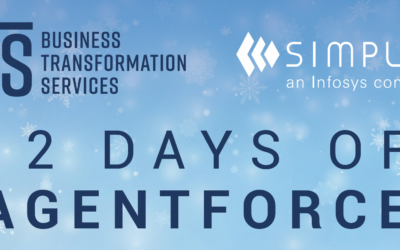It takes a village to keep people healthy. It also takes collaborative partnerships to design patient care that targets patients’ individual needs. Over the past two years, in particular, we’ve seen global connectedness’s impact on successfully controlling and treating disease.
Although much of the HLS industry responded to global health issues with internal solutions that best served their infrastructure, they quickly realized that piles of localized applications weren’t serving the greater purpose of treating the patient.
Partnerships are essential for HLS organizations to help standardize care and gain a better understanding of the challenges their patients face to get healthcare and how technology can help channel resources where they are needed.
Let’s discuss ways technology partnerships streamline processes with holistic data interpretation and management, channel AI capabilities for disease prevention and early detection initiatives, and create personalized care delivery systems that reach those most in need of care.
Adds value to intelligent data
Data is life. Well, OK, it shows signs of life. And society generates 2.5 quintillion bytes of data every day. For instance, Skype has 3 billion minutes of calls per day. We share five billion Snapchat videos and photos every day, and your inbox is overflowing with some of the 333.2 billion emails we send per day.
Data says everything about us. When organized based on commonalities within regions, age groups, socioeconomic factors, ethnicity, etc., data can help healthcare organizations understand health risks, environment concerns, lifestyle habits, resource distribution, health equity risks, and other factors to pinpoint gaps in patient care or quality of life and uncover opportunities to target social determinants of health.
The World Health Organization defines social determinants of health as “conditions or circumstances in which people are born, grow, live, work, and age.” So we now recognize that health outcomes are additionally impacted by social factors like political and economic forces.
When an organization can collect accurate, organized, and secured clinical data via EMR, for instance, working with automated systems like Salesforce HealthCloud, they can ensure valuable resources target the actual need with measurable solutions.
“Ideally, the socio-politico-economic conditions in a society should be such that its citizens enjoy a favorable set of social resources, and that these resources are distributed fairly,” WHO further explains. “The quality, quantity, and distribution of these resources, together, to a large extent, determine citizen’s health and well-being. Opportunities to have an education, a healthy living environment, nutrition, healthcare and employment are some of those resources.”
Cue interoperability.
Facilitates comprehensive care through interoperability
One of the many lessons the pandemic has taught us about patient care is that the success of personalized care and patient/provider relationships frequently rests on access to non-healthcare resources. For example, telehealth services skyrocketed in popularity in part because they virtually (quite literally) eliminated transportation and mobility challenges for patients.
With a growing focus on health equity, many healthcare organizations partner with cloud computing, AI technology, and holistic data management to effectively collaborate with community organizations, particularly community health, to incorporate essential services and resources into their patient care plan.
Capturing data from a patient’s initial intake survey through their EMR can shed light on financial hardship, a lack of insurance coverage, gaps in medical history information among different healthcare providers, or limited social support that typically ensures a patient takes their medications or schedules follow up visits. When flagged, clinics can connect with local organizations for outreach and support.
As healthcare organizations continue moving toward standardization in computing and data management, we hope patients will soon experience seamless, personalized care from their providers and the cooperative efforts of community services.
Connects patients with personalized health plans
Controlled data management and collection breathes life into AI technology. In other words, reliable data helps the HLS industry to really know its patients. And that data can save valuable time and money in connecting patients with the ideal provider and care plans.
In some cases, major retail and healthcare players who use this technology can offer customized employee health benefits that cater to their actual and often evolving needs.
“Customizing services and treatments to individual needs is the next frontier in healthcare and is a major part of Walmart’s commitment to helping associates and their family members find great doctors who consistently deliver the best value and quality care in their community,” said Lisa Woods, vice president, Walmart US Benefits.
Earlier this year, Walmart announced they partnered with Health at Scale to produce personalized provider recommendations for Walmart associates and their families using artificial intelligence.
Through this initiative, Walmart and Health at Scale will establish a more personalized healthcare experience that focuses on the needs of each individual at the moment and leverages industry-leading machine intelligence to identify providers who have successfully treated patients with similar characteristics and care needs.
That’s the power of partnerships and the future of healthcare. It’s about acknowledging the impact non-health-related issues have on the effectiveness of patient care, working with agencies that can contribute to the patient experience, and exploring the power data and AI applications will undoubtedly have on research, payor/provider relationships, the connectivity of services, and innovations in healthcare.
Let’s talk about how strategic technology partnering can move your organization toward more impactful, efficient, and innovative healthcare solutions.















0 Comments